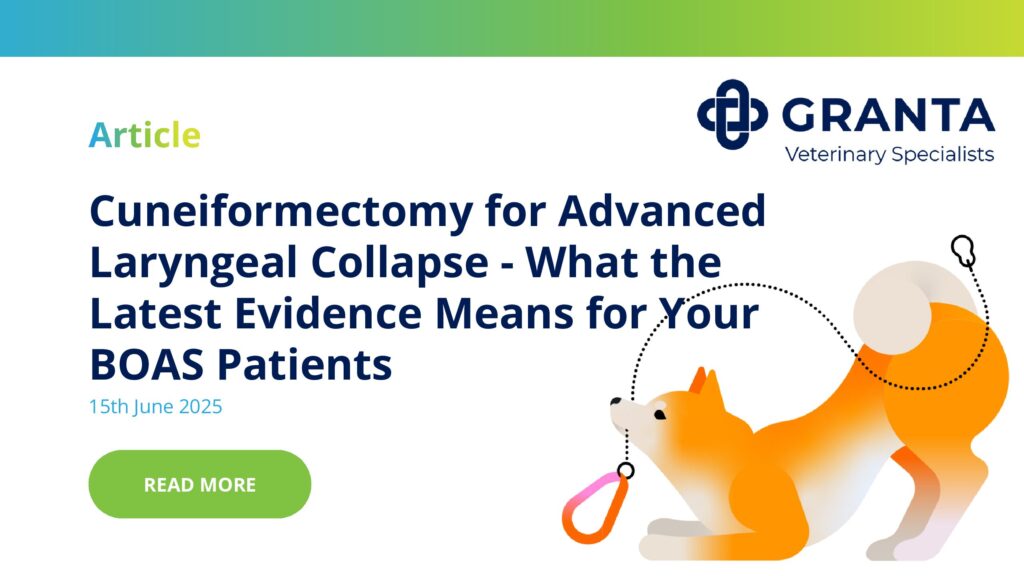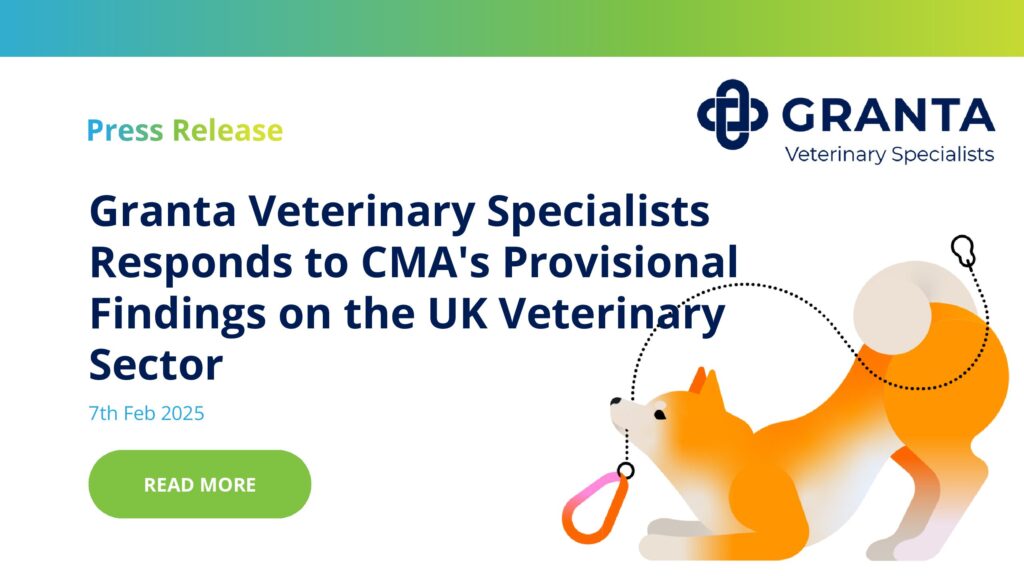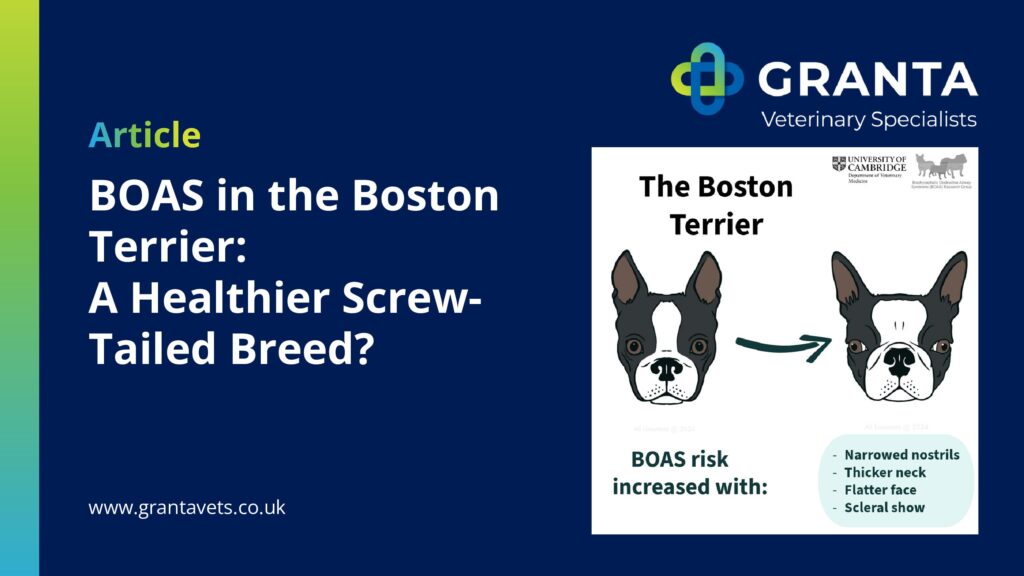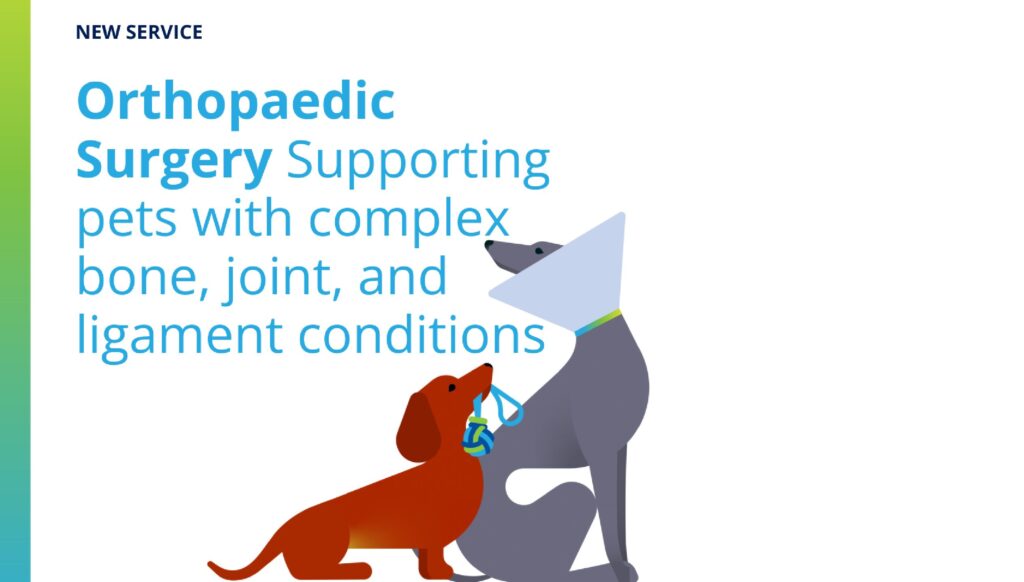Cuneiformectomy for Advanced Laryngeal Collapse – What the Latest Evidence Means for Your BOAS Patients
Sunday June 15, 2025
Complication rate and outcomes of laryngeal cuneiformectomy in dogs with advanced laryngeal collapse
This article summarises the findings of a recently published open-access paper by Alexander J. Chan BVSc (Hons) BA (Hons) MRCVS, Nai-Chieh Liu DVM MPhil PhD, and Jane F. Ladlow VetMB CertVR CertSAS DipECVS MRCVS. The work was carried out at Bristol Veterinary Specialists, the Institute of Veterinary Clinical Science (National Taiwan University), Granta Veterinary Specialists, and the Department of Veterinary Medicine, University of Cambridge.
The study set out to determine whether adding a partial cuneiformectomy (PC) to modified multilevel surgery (MMS) for brachycephalic obstructive airway syndrome (BOAS) increases peri-operative risk, and to document any effect on postoperative respiratory function.
Material and methods
Records were retrieved for brachycephalic dogs treated between 2014 and 2021 at the University of Cambridge and the Animal Health Trust. All patients underwent MMS (ala-vestibuloplasty, folding-flap palatoplasty, partial tonsillectomy and ventriculectomy). Dogs with grade II or III laryngeal collapse were additionally subjected to unilateral or bilateral PC at the surgeon’s discretion.
In total, 180 dogs met the inclusion criteria. They were divided into two cohorts:
-
Non-PC group – 94 dogs that received MMS alone
-
PC group – 86 dogs that received MMS plus cuneiformectomy
Data analysed included laryngeal collapse grade, BOAS functional grade, whole-body barometric plethysmography (BOAS index), body-condition score (BCS), length of hospitalisation, and all complications noted up to discharge and at the 6–12 week re-examination.
Results
The addition of cuneiformectomy did not raise the incidence risk of complications. Overall complications occurred in 19.4 % of non-PC dogs and 16.3 % of PC dogs (p = 0.758). Major complications—those requiring surgical intervention, causing severe dyspnoea, or resulting in death or euthanasia—were recorded in 7.4 % and 11.6 % respectively (p = 0.482).
Median hospital stay was one day in both groups (p = 0.743).
Dogs that underwent cuneiformectomy showed significant postoperative improvements in respiratory function. Their BOAS functional grade fell by a median of one grade (p < 0.0001), and their BOAS index fell by a median of 28.5 % (p < 0.0001).
Multivariate logistic regression revealed that a lower body-condition score (BCS < 4/9) was associated with a higher likelihood of postoperative complications (odds ratio 0.452; p = 0.004) when pre-operative BOAS grade and gender were controlled; cuneiformectomy itself was not an independent risk factor.
Conclusions
Within this retrospective cohort, incorporating partial cuneiformectomy into multilevel BOAS surgery did not increase peri-operative risk. Moreover, dogs with advanced (grade II–III) laryngeal collapse experienced marked objective improvements in respiratory parameters after the procedure. The authors conclude that cuneiformectomy is a safe and effective adjunct for managing higher-grade laryngeal collapse in brachycephalic dogs.
Full citation:
Chan AJ, Liu NC, Ladlow JF. Complication rate and outcomes of laryngeal cuneiformectomy in dogs with advanced laryngeal collapse. Veterinary Surgery. 2025;1-10. doi: 10.1111/vsu.14270.
This post has been prepared by Granta Veterinary Specialists to highlight the work of the authors listed above; all credit for the research rests entirely with them.



